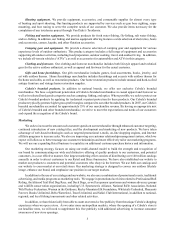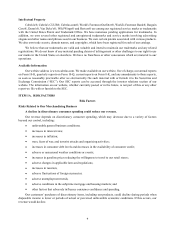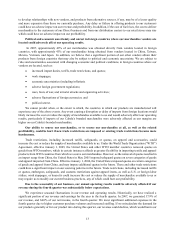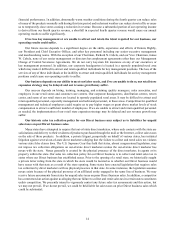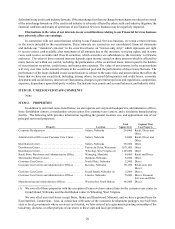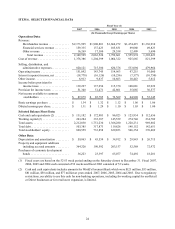Cabela's 2007 Annual Report Download - page 21
Download and view the complete annual report
Please find page 21 of the 2007 Cabela's annual report below. You can navigate through the pages in the report by either clicking on the pages listed below, or by using the keyword search tool below to find specific information within the annual report.15
The customer service enhancements we are implementing at our retail stores will cause our Direct business
to establish nexus in the states where our retail stores are located, which will cause our Direct business to pay
additional income and sales taxes and may have an adverse effect on the profitability and cash flows of our
Direct business.
The customer service enhancements we are implementing at our retail stores are designed to increase customer
convenience, purchasing, and delivery options. These enhancements include Internet kiosks, catalog order desks,
and in-store pick-up areas for catalog and Internet purchases. Because these enhancements will cause our Direct
business to establish nexus in states where our retail stores are located, we began, effective January 2008, collecting
and remitting sales taxes on Direct business sales to customers located in these states. The establishment of nexus
and imposition of income and use taxes by states on sales of our Direct business:
• will increase the tax collection and payment obligations of our Direct business, which could create
administrative burdens for us;
• could increase the total cost of our products in our Direct business to our customers relative to our
competitors that do not collect sales taxes on Direct business sales; and
• could decrease the sales of our Direct business or cause us to reduce the underlying prices for the products
sold through our Direct business.
These events could have an adverse effect on the profitability and cash flows of our Direct business.
We must successfully order and manage our inventory to reflect customer demand and anticipate changing
consumer preferences and buying trends or our revenue and profitability will be adversely affected.
Our success depends upon our ability to successfully manage our inventory and to anticipate and respond
to merchandise trends and customer demands in a timely manner. We cannot predict consumer preferences with
certainty and they may change over time. We usually must order merchandise well in advance of the applicable
selling season. The extended lead times for many of our purchases may make it difficult for us to respond rapidly
to new or changing product trends or changes in prices. If we misjudge either the market for our merchandise or
our customers’ purchasing habits, our revenue may decline significantly and we may not have sufficient quantities
of merchandise to satisfy customer demand or we may be required to mark down excess inventory, either of which
would result in lower profit margins. In addition, as we implement our retail store expansion strategy, we will need to
construct additional distribution centers or expand the size of our existing distribution centers to support our growing
number of retail stores. If we are unable to find suitable locations for new distribution centers or to timely integrate
new or expanded distribution centers into our inventory control process, we may not be able to deliver inventory to
our retail stores in a timely manner, which could have an adverse effect on the revenue and cash flows of our Retail
business.
A natural disaster or other disruption at our distribution centers or return facility could cause us to lose
merchandise and be unable to effectively deliver to our direct customers and retail stores.
We currently rely on distribution centers in Sidney, Nebraska; Prairie du Chien, Wisconsin; and Wheeling,
West Virginia, to handle our distribution needs. We operate a return center in Oshkosh, Nebraska; and our Wheeling,
West Virginia, distribution center also processes returns. Any natural disaster or other serious disruption to these
centers due to fire, tornado, or any other calamity could damage a significant portion of our inventory, and materially
impair our ability to adequately stock our retail stores, deliver merchandise to customers, and process returns to
vendors and could result in lost revenue, increased costs, and reduced profits.
Our failure to obtain or negotiate economic development packages with local and state governments
could cause us to significantly alter our retail store strategy or format and/or delay the construction of one or
more of our retail stores and could adversely affect our revenue, cash flows and profitability.
We have received economic development packages from many of the local and state governments where our
retail stores are located. In some locations, we have experienced an increased amount of government and citizen
resistance and critical review of pending and existing economic development packages. This resistance and critical
review may cause local and state government officials in future locations to deny or limit economic development
packages that might otherwise be available to us. The failure to obtain similar economic development packages in


